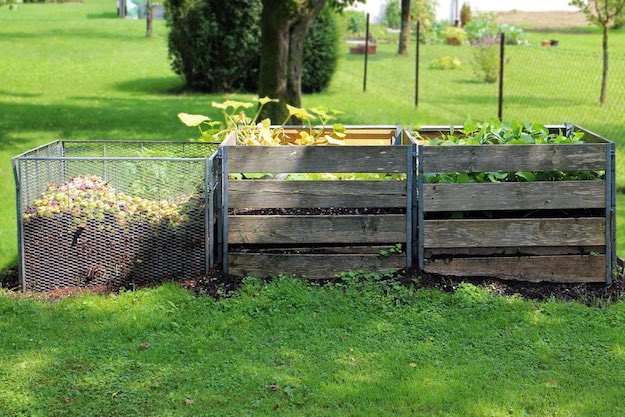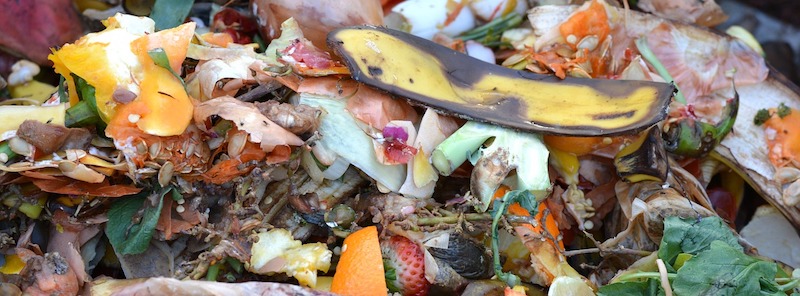Composting in winter can be a challenge but it shouldn't discourage you. I sure was not just imagining the possibilities of healthy crops growing in the spring planting season. With natural rich black compost, you can be assured of a garden with healthy vegetables and plants!
Composting In Winter: What You Need To Know
Composting is an essential practice in my garden. I get to grow healthy, organic and clean food for my family. It may seem so much of a hassle to be composting in winter but the abundant fall leaves seem such a waste to be ignored. My kitchen scraps don't stop in winter so I just have to take responsibility and put them into good use. While some factors may slow down the process, composting in winter is not impossible. Besides, all those rich materials from your fall garden clean up shouldn't be wasted. Find out how you can successfully cook up a compost even in the cold winter with these three smart tips, ideas, and guide.
1. Compost Insulation
To break down the compost materials, microorganisms such as bacteria and fungus have to be at work in the process. Find out more tips on how you can keep your compost warm and protected from the cold.
Compost Bin And Tumblers
What's great with compost bin and tumblers when composting on winter is the convenience of mobility. You can always move it to a warmer place during winter. The only drawback is the limited space. Make sure the ratio of carbon to nitrogen is always balanced no matter how much food scraps you have. There are compost bins and tumblers with built-in insulation to keep your compost warm and going. Infrequent turning over of your pile will also help keep the inside warm and evenly moist.
Compost Pile
Although sunlight is scarce in this season, it would still help to place a compost pile in areas where it can get as much sunlight as possible. A compost pile will have its drawbacks this season considering how it cannot be totally prevented from being exposed to the frost. Digging a hole and spreading a thick layer of fallen leaves before adding the rest of the compost materials will help. Cover your pile with a tarp to protect it from the falling snow. Spray it with water every now and then to keep it moist but not soggy.
2. Learn To Identify Brown From Green Compost Materials

While it's convenient to just throw stuff into your compost pile or bin, there's actually a formula to it. You need to know which is brown or green compost material and the mixture ratio if you don't want an inactive or very foul compost.
Green Compost Material
We could agree that despite our actions, organic materials still break down and rot. But if you want a healthy compost, you'll need to follow simple rules. A healthy compost needs to have a balanced ratio of 2 parts brown compost material and 1 part green material. Green compost materials or the nitrogen-rich component in your compost are usually found in the kitchen. From fruit peelings and rind to food scraps except for meat and dairy. Check the acceptable or proper compost materials for a healthy compost here.
Brown Compost Material
Brown compost materials are the carbon source in dry materials such as fallen leaves, straw, twigs, and grass. They neutralize the nitrogen in green compost materials. Green compost will be available in your kitchen year-round. So you would do well to keep the fallen leaves you have gathered in the fall in store. You need to have a steady supply of brown compost materials since a larger portion of your compost needs to be brown or carbon source materials.
3. Consider Your Location For Moisture Control
Depending on your area, you might want to add more water to your compost or shield it from too much water when the rain starts pouring. Learn how to deal with keeping your compost at the right moisture level depending on the weather and climate in your area.
Northern Region
Despite the snow in winter, the dry winter air can cause your compost to lose moisture. Make sure to water your compost in small amounts. Even pee liquid will do lots of good for your compost. Avoid watering your compost when the weather is extra freezing. Always cover your compost bin or pile with a tarp after you've added in compost material or water.
Southern Region
Although you can compost in many areas in the south like it doesn't winter, keeping your compost from getting soggy will be your challenge. The heavy raining in the coastal areas of the south will be a challenge. Always keep your compost bins and piles covered to keep rain from pouring down on it. On the other hand, composting in the desert and semi-desert areas in the south is ideal during the winter season. You'll have to find ways instead for your compost bin or pile to catch water to keep it moisturized. In a compost pile, for example, make a hole in the center of the pile to catch water in.
More winter composting ideas, tips, and guide in this video from Revolution Of Thought:
Even the cold season shouldn't stop you from gardening. In fact, one of the gardening activities you should be doing in winter is composting. Unlike what most people will think, winter can actually be a productive time for composting in the garden and certainly, money-saving too. Imagine not having to buy compost from the garden store. Your indoor plants will need compost this winter too. You'll definitely need more for starting seeds earlier indoors for spring planting. Keep composting in winter and keep your money in your pockets!
Did you find this article informative? Got plans to make up time for winter composting? Do share your thoughts and ideas by posting it in the comments section below!
Haven't been into composting yet? Then learn the basics of composting to get further on in gardening.
For more gardening tips and tricks, follow Garden Season on Facebook, Twitter, Instagram, and Pinterest!
Editor’s Note: This post was originally published in January 2016 and has been updated for quality and relevancy.
Featured image via mckenzielynnmclean



